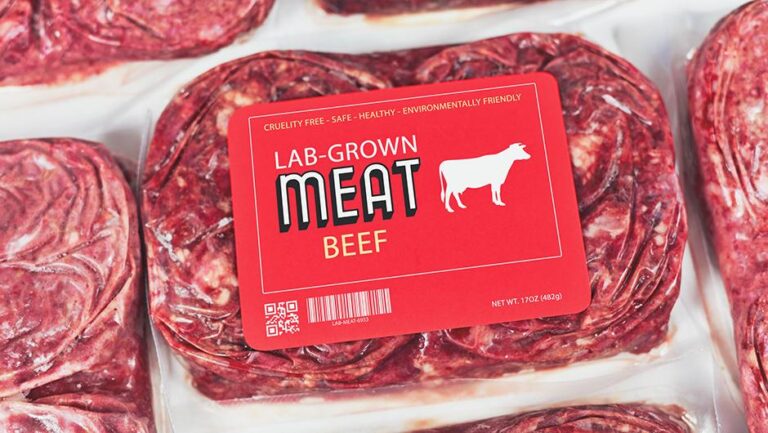Australia is set to make history as its first lab-grown meat is poised to appear on restaurant menus within weeks, marking a significant milestone in the country’s food innovation landscape. Developed through cutting-edge cellular agriculture techniques, this cultured meat promises a more sustainable and ethical alternative to traditional livestock farming. As the nation embraces this groundbreaking advancement, industry experts and consumers alike are keen to see how lab-grown meat will reshape Australia’s food and drink scene.
Australia Pioneers Lab-Grown Meat as Innovative Protein Source
In a groundbreaking stride towards sustainable food innovation, Australia is set to introduce lab-grown meat to its dining establishments within weeks. Developed through cutting-edge cellular agriculture techniques, this novel protein source promises to significantly reduce the environmental footprint associated with conventional livestock farming. Early tastings suggest the texture and flavor closely match traditional meat, offering consumers an alternative that aligns with both ethical considerations and climate goals.
The launch highlights several key benefits that could reshape the future of food production:
- Lower greenhouse gas emissions compared to conventional meat farming
- Reduced land and water use, helping to alleviate agricultural pressures
- Elimination of antibiotics and hormones commonly used in livestock
- Potential for scalable production meeting growing protein demands
| Aspect | Lab-Grown Meat | Conventional Meat |
|---|---|---|
| Carbon Footprint | Up to 80% lower | High |
| Water Usage | 90% less | Extensive |
| Production Time | Weeks | Months to years |
| Animal Welfare | No animals harmed | Animal husbandry needed |
Food Industry Prepares for Regulatory Approval and Market Launch
Australia’s burgeoning lab-grown meat sector is on the cusp of a significant breakthrough, with industry leaders gearing up for imminent regulatory endorsement. Companies have engaged closely with federal food safety authorities, to ensure all scientific standards and labeling requirements are meticulously addressed. This collaborative approach is aimed at delivering transparency and confidence to consumers while paving the way for commercial-scale production. The anticipated green light is expected within weeks, marking a historic milestone for a nation long focused on innovative food solutions.
The market launch strategy involves key partnerships with major food service providers and restaurant chains, ensuring that this sustainable protein alternative seamlessly integrates into existing supply networks. Early adopters are preparing pilot menus featuring lab-grown beef and chicken, positioning these options alongside traditional offerings to encourage consumer trial and feedback. Below is a summary of critical industry readiness factors:
- Regulatory milestones: Completion of all safety evaluations and labeling approvals
- Supply chain: Establishment of scalable bioreactors and distribution channels
- Consumer engagement: Education campaigns on environmental and ethical benefits
| Aspect | Status | Expected Timeline |
|---|---|---|
| Food Safety Certification | Under final review | 2 weeks |
| Production Scale-up | In progress | 1 month |
| Market Launch | Planned | Within weeks |
Experts Recommend Embracing Lab-Grown Meat to Enhance Sustainability and Food Security
Leading environmental scientists and food industry experts have highlighted the critical role that lab-grown meat could play in reducing the ecological footprint of food production. Traditional livestock farming is a major contributor to greenhouse gas emissions, water consumption, and land degradation. In contrast, cultured meat requires significantly less land and water, producing fewer emissions. Experts emphasize that incorporating lab-grown meat into mainstream diets could alleviate pressure on natural resources, making food systems more resilient and sustainable in the face of increasing global demand.
Beyond environmental benefits, lab-grown meat offers promising solutions to food security challenges. With the global population projected to reach 9.7 billion by 2050, the demand for protein is expected to rise sharply. Industry specialists argue that cultured meat can provide a reliable and scalable source of high-quality protein that bypasses many vulnerabilities of traditional meat supply chains, such as disease outbreaks and climate volatility. The following table illustrates key sustainability metrics comparing conventional beef with lab-grown alternatives:
| Metric | Conventional Beef | Lab-Grown Meat |
|---|---|---|
| Land Use | 326 m²/kg | 20 m²/kg |
| Water Usage | 15,000 L/kg | 1,500 L/kg |
| Greenhouse Gas Emissions | 27 kg COâ‚‚e/kg | 4 kg COâ‚‚e/kg |
- Reduced environmental impact: minimizes deforestation and methane emissions.
- Increased supply chain stability: less vulnerable to droughts and diseases.
- Ethical advantages: eliminates the need for animal slaughter.
Closing Remarks
As Australia prepares to welcome its first lab-grown meat onto restaurant menus within weeks, the move signals a significant shift in the nation’s food industry. Advocates highlight the potential environmental and ethical benefits, while industry stakeholders eye new market opportunities. As this pioneering product enters the mainstream, all eyes will be on consumer response and regulatory frameworks shaping the future of sustainable protein in Australia.




